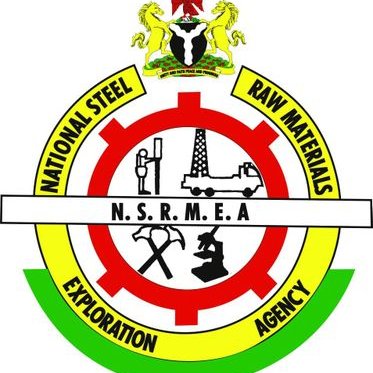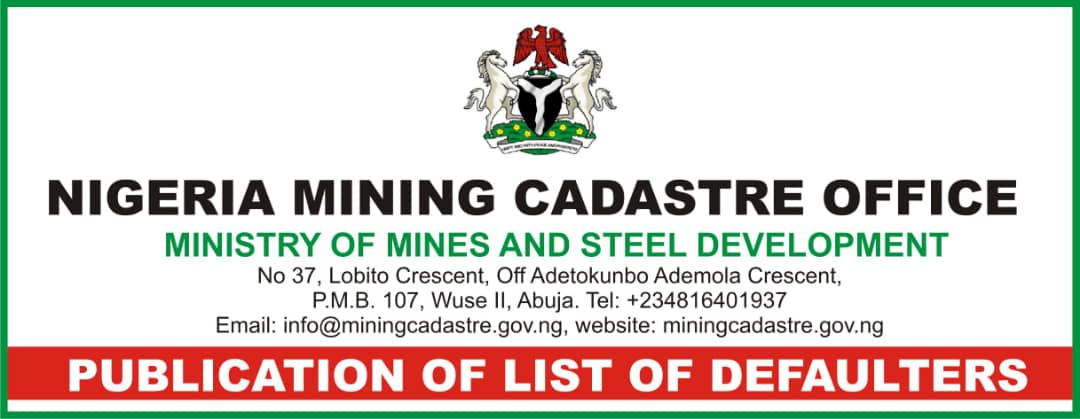
‘The administration of President Muhammadu Buhari must exercise the political will needed to actualize the funding interventions announced by government in favour of mining operators in the country,’ the Miners Association of Nigeria (MAN) has said, adding that the non-implementation of funding policies in the sector is worrisome and negatively impacts the ability of indigenous operators to achieve set goals.
Ag. National President of the Association, Alh Musa Muhammad who made the call at a recent meeting with journalists in Abuja, explained that under-funded indigenous operators operate alongside well-funded foreign operators in the country, noting that it is crystal clear that indigenous operators also need the financial support of the Nigerian government, especially that mining is capital intensive.
Discussing the pledges made by government to support operators, the president of the association called on the Buhari administration to ‘implement the five billion Naira MMSD/BoI intervention fund for ASM miners as well as a six billion Naira post Covid-19 intervention fund announced in favour of mineral sector operators.’
He also called on government to implement the ‘two hundred million Naira support fund for small scale miners’ announced by the administration.
Lamenting the failure of relevant authorities to implement the policy decisions, Muhammad said: ‘Despite the intention of the administration of President Muhammadu Buhari to diversify the economy through mining and agriculture, an agenda to which some funding interventions are designed, the delegated agencies have been unfair to the solid minerals sector, in comparison to the maximum attention accorded the agricultural sector.’
‘The Federal Government through the CBN, NEXIM bank, BOI and other financial institutions in Nigeria have announced one intervention or the other for the Nigerian mining sector in the last decade without trace of implementation,’ he said.
While justifying the opinion of the Minister of Mines and Steel Development, Arc. Olamilekan Adegbite that there should be evidence of creditworthiness by operators who seek loans, the MAN President explained that ‘the best approach is to amend the stringent conditions applied to the interventions so that the large mass of small scale mining companies can assess the intervention fund.’
The MAN president expressed concern that ‘the continued inaccessibility of the intervention funds by small scale miners is evidence of failure of the intervention,’ adding that, ‘it is worthy of note that at least 90% of the activities in the Nigerian mining industry is by artisanal and small scale miners.”
He explained that Anchor Borrowers’ Programme in the Agricultural sector created by the Development Finance Department of the Central Bank of Nigeria and was launched by President Muhammadu Buhari (GCFR) on November 17, 2015 in line with the Federal Government’s diversification of the Nigerian economy from crude oil to boost non-oil exports from Nigeria.
He explained that ‘the objective of the programme was to create economic linkage between small holder farmers and large-scale processors, thereby increasing farmers’ production, substituting imports of Agricultural commodities that can be produced in Nigeria and boosting non-oil exports.’
He said ‘The same model should be applied to the indigenous small-scale mining operators with same intensity as seen in the Agricultural sector.’
‘This fund was provided from the N220 billion Micro, Small and Medium Enterprises Development Fund (MSMEDF); with an all inclusive interest rate of 9% p.a. Tenor for these loans were based on the gestation period of the commodities; which should also apply in the case of mining commodities that are priced in United States Dollars (USD).
‘The present reality of the USD to Naira exchange rate at the parallel market which stands at N701 to USD1 could have been avoided if small-scale miners were also assembled in various clusters across Nigeria and accorded the same opportunity.
‘In addition, whereas all the interventions for the mining sector had very stringent unachievable collateral requirements by the participating financial institutions; the Anchor Borrowers’ Programme waived landed property as collateral requirement and other stringent conditions, and required a minimum equity contribution of 5% by the farmers.
‘The same collateral requirements applied to the Anchor Borrowers Programme should apply to the small-scale mining sector,’ he added.
Discussing the progress made in giving support to farmers, the president made reference to a Central Bank of Nigeria (CBN) data, saying that ‘over N1.1 trillion has been disbursed to over 4.5 million small holder farmers cultivating 21 commodities across Nigeria as at May 2022.’
‘According to data from the Central Bank of Nigeria, the cumulative support to the healthcare sector via the Healthcare Sector Intervention Facility (HSIF) stood at N108.85 billion in disbursements for 118 projects, comprising of 31 pharmaceuticals, 82 hospitals and 4 other services.’
‘The Real Sector Support Facility (RSSF) under which the Central Bank of Nigeria disbursed the sum of N151.23 billion to 15 additional projects in agriculture, manufacturing, mining and services; it is clear that whilst agriculture continues to enjoy unfettered access to CBN intervention funds of various types, the mining sector doesn’t have the targeted funding via intervention schemes but gets lumped in the mix with manufacturing, services and others; whereas the mining sector ought to “stand alone” on its own strategic sector merit.
While saying that the mining sector has been relegated to the background due to lack of knowledge of its immense contributions to non-oil exports, he explained that active small-scale mining operators across Nigeria accounts for significant contributions to the national GDP growth in the non-oil exports statistics.








